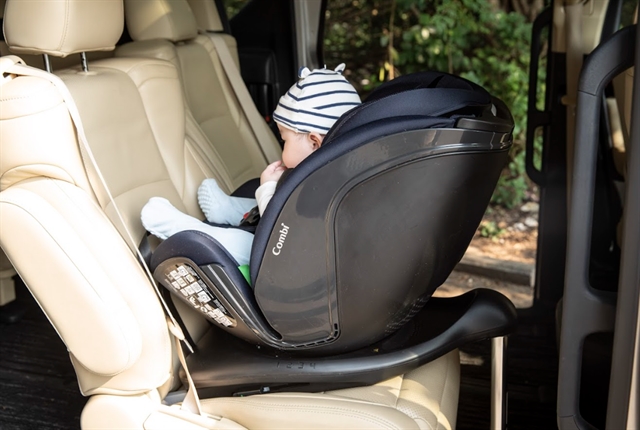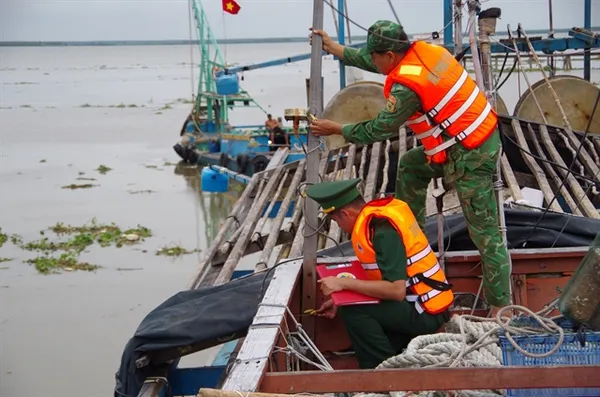 Economy
Economy


|
| Cars transporting children will be required to have a safety seat or cushion suitable for the child’s age and height from January 1 next year. — Photo combi.com.vn |
HÀ NỘI — The legal requirement for child safety seats starting from January 1 next year has sparked huge demand, with purchasing power rising sharply, especially in major cities.
According to the 2024 Road Traffic Safety Law, cars transporting children must have a safety seat or cushion suitable for the child’s age and height from the beginning of 2026.
Children under 10 years old and shorter than 1.35 metre are not allowed to sit in the front seat.
Drivers who do not comply can face fines ranging from VNĐ800,000 (US$30.5) to VNĐ1 million ($38).
The move is seen as an important step in raising awareness about road safety for children, and it has also created a strong boost for companies selling safety equipment in cars, particularly for specialised child seats.
There is currently a wide variety of child safety seats available on the market, with prices ranging from VNĐ1.5 million to VNĐ6 million for mid-range models, to over VNĐ10 million for high-end models.
To save costs, many people are opting to buy second-hand seats or rent them on a daily basis for infrequent or short-term use, such as when travelling or going back to their hometown.
The buying and selling of second-hand seats is quite active on social media community groups. The typical price for a used seat is around VNĐ700,000 to VNĐ1 million, while rental prices range from VNĐ150,000 to VNĐ250,000 per day, depending on the type of seat, rental duration and condition. The longer the rental period, the lower the price.
Hoàng, manager of a car accessories store in An Đông Ward, HCM City, told the Người Lao Động (Labourer) newspaper that after the announcement of the mandatory child safety seat regulation, many stores quickly sourced products to start selling.
“There were a few stores that previously imported child seats for display, but sales were so slow that most stopped importing them. This time, the demand seems clearer,” said Hoàng.
Not only car accessory stores, but many baby product stores have also started importing safety seats to test the market.
Nhung, an employee at a store in An Khánh Ward, HCM City, said that many parents had inquired about these items recently.
“They mainly want to explore the models and prices. Some said they would come back to buy once the regulation is officially implemented,” she said.
To assist citizens in choosing the appropriate products, the Traffic Police Department under the Ministry of Public Security has recommended that parents might use safety belts, child seats, or cushions, as long as they are suitable for the child's physical condition, family circumstances, and the car.
These devices serve as mandatory protective equipment, helping to minimise the risk of injury in the event of a collision or accident. Safety standards for child safety seats have already been established under the National Technical Regulation.
Additionally, on each certified device, manufacturers are required to attach a fixed label clearly indicating the weight and height limits for children, installation instructions and safety warnings. If a device lacks a label, warning signs or installation instructions, it may not meet the technical requirements. — VNS




